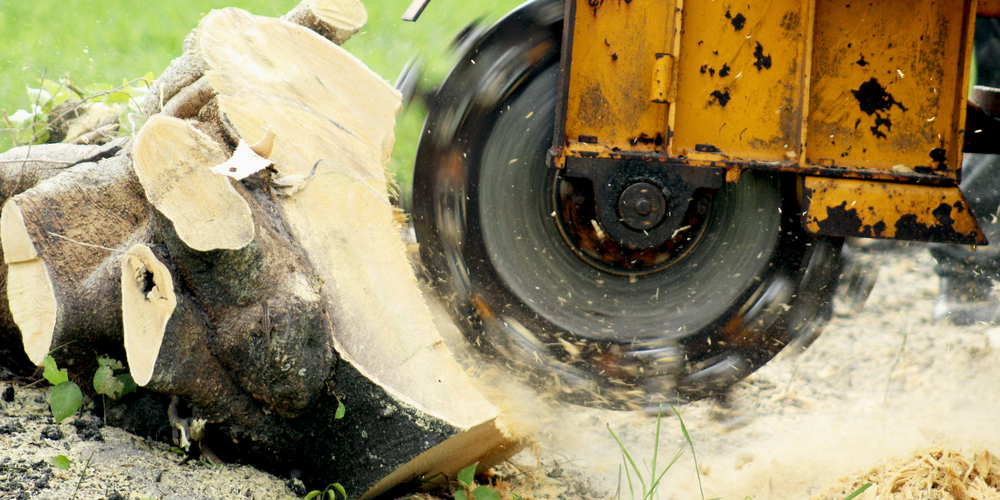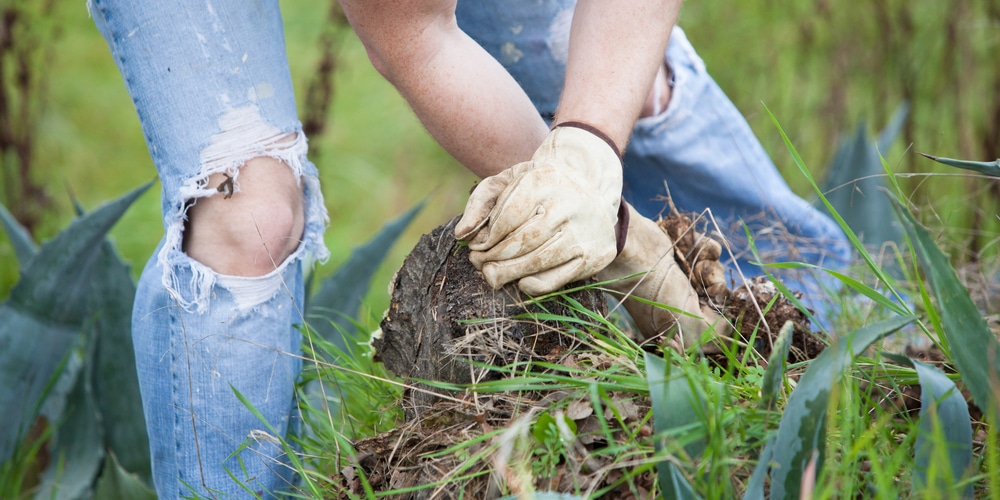Have you tried cutting down a small tree only for it to sprout new branches a month later? Then you’re sure it’s dead when you chopped the stump and the branches to the surface? Only for new sprouts to appear just several feet away? Yeah. You are all in the same boat. Keep reading to learn how to remove a tree stump permanently.
It takes a lot of effort to maintain a yard tidy and clean. Keeping the grass cut, the flower bed maintained, and a thousand other elements can help you achieve the aesthetic you desire for your outside space. Taking care of the plants is a difficult chore within itself.
How to stop small trees from growing back: Stump grinder

In the olden days, people cleared tree stumps manually. Farmers would swing the digging and cutting instruments into the earth to cut the tree roots till the stumps were loose enough to pull out. It’s not a simple task. Despite using a tractor to offer some pulling strength, some stumps could have required days to remove.
Later came a stump grinder. Technology has progressed significantly. You now have access to a wide choice of stump grinders. Some are tiny enough to be handled by hand, while others are enormous tractor-powered grinders. With several more security features, of course.
Stump killing herbicide
Using stump-killing herbicides following tree removal is among the most practical ways to remove that troublesome stump. In most cases, you’ll want to do this shortly before cutting down a tree or rather within thirty minutes of chopping it down.
Also, when it involves killing a freshly cut stump in the yard, spring is the most optimal time of the year. Select a stump-killing herbicide that may be sprayed or brushed on. Apply that product to the fresh stump’s whole cut area or as indicated by the supplier. If used correctly, the stump killers will not seep into the ground or harm other crops. To kill them, the active substances will go down the roots.
How to stop small trees from growing back: Dig manually
If the buds are in a region where herbicides aren’t allowed, dig them up and eradicate them by hand. Dig some few inches beneath the ground level all around the sprout using a spade. Trim the sprouts at ground level with garden shears and bury them with soil to restrict light.
You will ultimately spend the grounds’ stored food supplies, and the root systems will stop putting up sprouts if sprouts are killed as they emerge.
Decaying in a Decorative Manner
Making a flower planter out of a stump is a creative method to expedite its decay. Hollow out the tree stump and dig several drainage small holes on the sides at the bottom to do this—plant colorful annuals in the hollow after filling using potting soil.
Impatiens (Impatiens walleriana) and coleus (Solenostemon scutellarioides) thrive in the shade, while petunias (Petunia x hybrida) and miniature snapdragons (Antirrhinum majus) thrive in the sun. Growing a stump hastens its decomposition. Cover the stump using a wood preserver to keep it from rotting.
Controlling Chemicals
Another option for preventing tree stump regrowth is to use chemicals to poison the stump. This procedure does not destroy the stump as quickly as grinding and may require more than a single application, but it’s more convenient for do-it-yourselfers who are not confident in their ability to grind stumps. Start by drilling many holes in the trunk’s sliced surface. It is more effective to drill deeper holes. After that, use a stump killer to plug the holes.
There seem to be several products in the market that are specifically designed for this purpose. Additionally, you can use broadleaf weed herbicides in the perforations. Before purchasing a product, look at the labels and become familiar with the hazards and precautions.
Put on goggles, long sleeves, and gloves whenever you apply toxic herbicides in your garden. Before you proceed, read the entire label. Any residual product should be kept in the actual container and away from children. When you do not even think you’ll utilize the item again, properly dispose of it.
How to stop small trees from growing back: Take away
These young trees develop without building a stable root structure, and they may tumble without notice as they grow larger. There are a variety of options for getting rid of those bothersome stumps. It all relies on how much effort you’re eager to commit and how successful the strategy you’re planning to use is.
